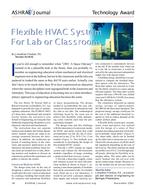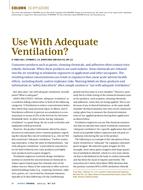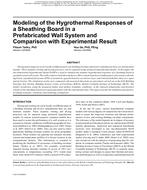“Ventilation systems are integral components of commercial cooking operations. They are primarily used to exhaust heat, smoke, and odors from commercial kitchens in order to provide a comfortable environment for workers and patrons in commercial food service establishments. Most ventilation systems are equipped with grease filters that are used to prevent fires from occurring in ventilation ducts. Recently, manufacturers of grease filters have designed units to remove particles and condensed vapors prior to discharging of the effluent.
There is considerable discrepancy in the industry as to the effectiveness of these devices in removing grease from cooking effluents. Test results show a wide range of removal efficiencies, depending mainly on the method of test (MOT) used for measurement.
To provide an accurate and repeatable assessment of grease removal efficiencies, a standardized test method must be developed and demonstrated. Once approved, the method will establish a nationally recognized measurement tool for evaluating competing grease removal technologies.
As an initial step in this process, the University of California, Riverside, Bourns College of Engineering-Center for Environmental Research and Technology (CE-CERT) with assistance from the University of Minnesota (U ofM), developed a grease generator technology that can simulate actual cooking emissions, including particulate matter and condensable grease vapors. The combined team evaluated possible approaches, designed and developed a prototype, and evaluated the prototype with regard to effectiveness in simulating cooking effluent. This successful first step is expected to lead to a second phase of work, where the grease generator will be used in inter-laboratory comparisons and in evaluation of several different types of grease removal systems.”
Product Details
- Published:
- 2004
- File Size:
- 1 file , 3 MB
- Product Code(s):
- D-28814


